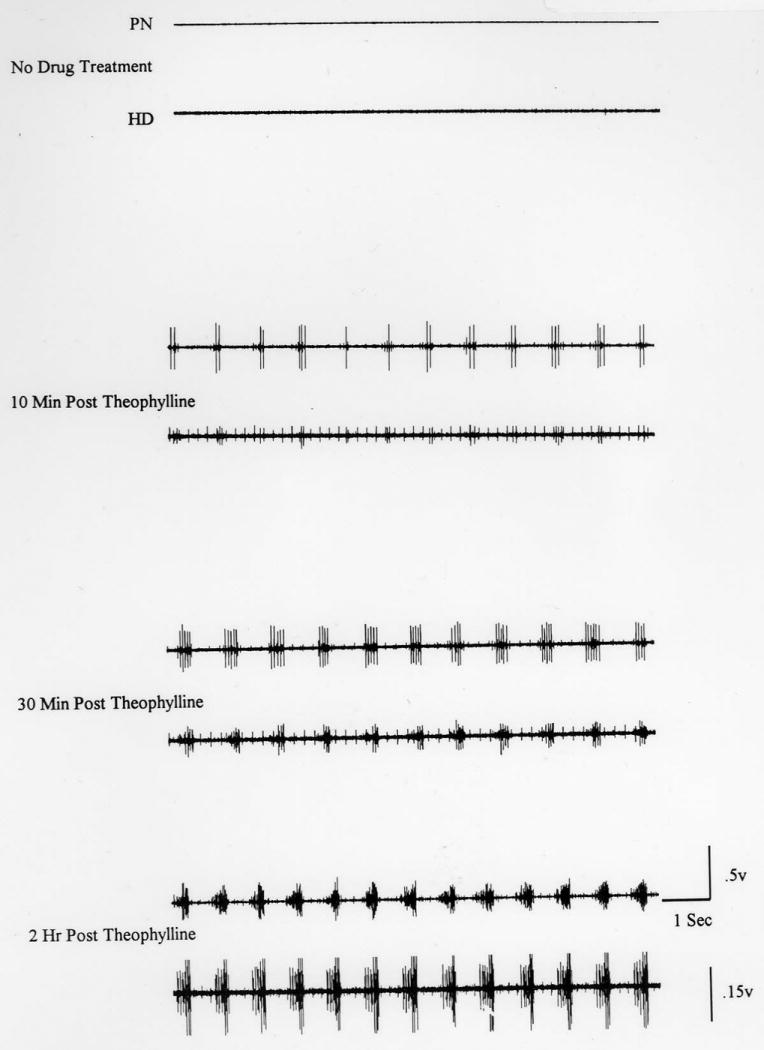Figure 1.

A representative neurogram from a hemisected and spontaneously breathing animal showing respiratory-related activity in the nerve (PN) and hemidiaphragm (HD) ipsilateral to hemisection. In the upper two traces, the total absence of activity in both the nerve and hemidiaphragm is indicative of a complete hemisection. However, 10 min after administration of theophylline (third and fourth traces), activity in the left nerve and left hemidiaphragm becomes evident. The induced respiratory-related activity in the nerve and hemidiaphragm becomes progressively enhanced. 30 min after the drug (fifth and sixth traces), induced activity is more distinct. At 2 h after drug administration, (seventh and eighth traces), the induced respiratory-related activity in both the nerve and hemidiaphragm is very similar (synchronous) with normal activity (Reprinted from Nantwi et al., 1996). Note the similarity in timing and duration of activity in both the nerve and hemidiaphragm.
